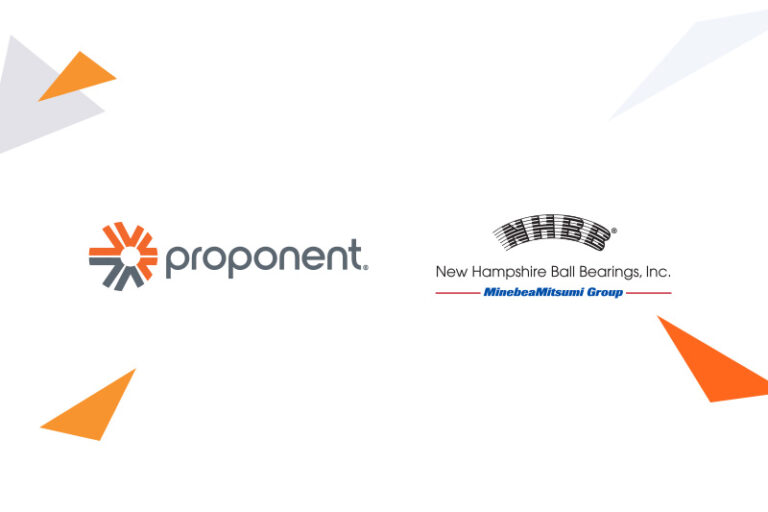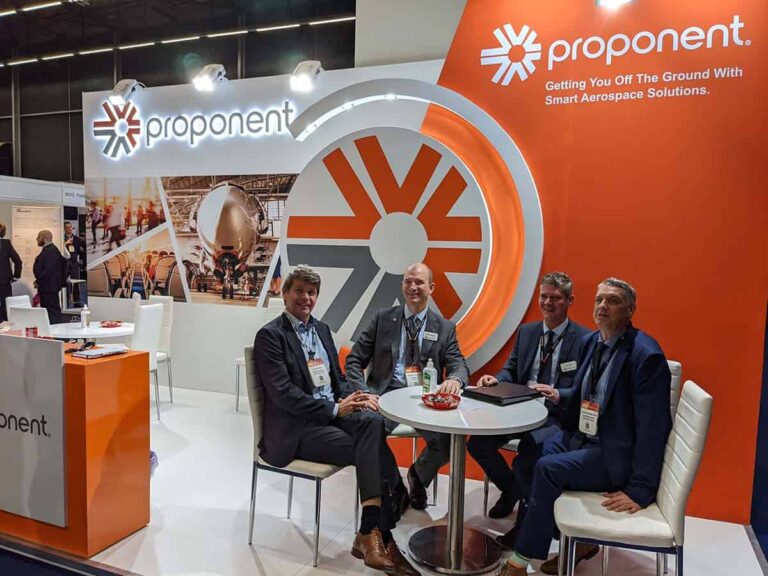How can companies in the aerospace industry prepare their inventory before beginning production? Material planning, also referred to as Material Requirements Planning (MRP), in simple words, is a helpful system used by many manufacturing companies to forecast and prepare their inventory for production and customer demand. Using material planning makes it easier to effectively account for inventory ordering time and production lead time. Material management can make any company more efficient and productive. While important across every industry, aviation companies can especially benefit from this detailed planning system for their materials management as it can ensure the right materials are on hand at the right time, which can be paramount during AOG times.
The Material Planning Process
Material planning helps gather all the requirements needed for production in order to better plan for future customer orders. Many employees have jobs that will aid in material planning, but the material planner, the main employee in charge of material planning, will coordinate all parts of the process.
To begin material planning, companies must use forecasting techniques, which, depending on the company, can include analyzing trends in ordering, the bill of materials, current inventory stock, production lead times, and buying patterns in the industry to predict how much inventory to order. The material planner will manage efforts to analyze this data and, with it, return the overall plan for more effective scheduling, production, and inventory. This plan will account for all the materials required for production, as well as include reports to establish the responsibilities of each department and a production schedule to detail the time it will take to complete the product.
There are many ways companies in the aerospace industry can take advantage of material planning. For example, an aviation company could use material planning before beginning production of an aircraft; then they are prepared for any situation. The company would first review its business and accounting data to help predict how much inventory or time it will need. Assuming their data is accurate, they might find that a certain material they’ve purchased in the past is still in their inventory, so they don’t need to purchase more. Or they may find that their customers aren’t currently buying a specific product, and they don’t need to produce as much as they have in the past. This helps them avoid spending time and money producing unnecessary parts that will deplete available storage space. They might even discover that a material or part can ship faster than anticipated or they need less production lead time than anticipated. Any of these discoveries will lead to better use of the company’s money and time.
The Three Inputs of MRP
To effectively implement MRP, three essential inputs are required, namely the Master Production Schedule (MPS), the Inventory Status File (ISF), and the Bill of Materials (BOM). Here we explore each of these inputs and their significance in the material planning process.
Master Production Schedule (MPS):
The Master Production Schedule is a critical input in MRP that outlines the production plan for finished goods over a specific time horizon. It specifies what products need to be produced, the quantities required, and the planned production dates. By aligning the MPS with customer demand, production capacities, and lead times, organizations can ensure efficient scheduling and optimize their production processes.
Inventory Status File (ISF):
The Inventory Status File provides essential information about the current inventory levels of raw materials, components, and finished goods. It includes data on available quantities, stock locations, and any reservations or allocations. The ISF serves as a real-time snapshot of the inventory status, enabling accurate calculations of material requirements and helping organizations avoid stockouts or excess inventory.
Bill of Materials (BOM):
The Bill of Materials is a comprehensive list that details all the components, sub-assemblies, and raw materials required to manufacture a finished product. It specifies the quantity of each item needed and the hierarchical structure of the product. The BOM serves as a foundation for MRP calculations, allowing the system to accurately calculate material requirements based on the production schedule and generate purchase or production orders accordingly.
By integrating these three inputs effectively, organizations can optimize their production schedules, maintain optimal inventory levels, and ensure smooth operations throughout the supply chain. Implementing MRP with these inputs empowers businesses to enhance efficiency, reduce costs, and meet customer demands effectively.
MRP Outputs
Using the provided inputs, Material Requirements Planning (MRP) performs calculations to determine the necessary materials, quantities, and timing for the production process. This enables businesses to implement just-in-time (JIT) production, scheduling production based on material availability. As a result, inventory levels and carrying costs are minimized, as materials are not stored in warehouses but arrive precisely when needed. By coordinating material arrival and production commencement, businesses can ensure smooth workflow processes without delays.
The MRP provides a detailed plan specifying the timing of material arrivals, aligned with their requirements in the production process, as well as scheduling for subassemblies. By utilizing a master production plan and considering subassembly build times, the MRP effectively reduces the accumulation of materials on shelves and prevents bottlenecks in the production process. This streamlines operations, optimizes resource utilization, and enhances overall efficiency in material planning and execution.
Understanding the Difference Between MRP and ERP
Material planning involves two important concepts: Material Requirements Planning (MRP) and Enterprise Resource Planning (ERP). While MRP specifically focuses on managing materials for production, ERP provides a comprehensive suite of applications that integrates material planning with various other business processes. MRP calculates material requirements based on factors like the Master Production Schedule (MPS), Bill of Materials (BOM), and inventory levels, ensuring optimized inventory and timely availability of materials. On the other hand, ERP offers a broader scope, encompassing finance, human resources, sales, and customer relationship management. It provides a centralized platform for managing and sharing data across departments, enabling better coordination and informed decision-making. By understanding the difference between MRP and ERP, organizations can select the appropriate system or combination of systems to effectively address their material planning needs and achieve operational excellence.
The Importance of Accuracy
If your company has completed accurate material planning, the material planner will have ensured that your inventory balances reflect your actual numbers, accounted for the time it will take for products to arrive and be assembled, and reevaluated your current resources—such as your production capacity and vendors—to see what can be improved and what costs can be reduced. Without these precautions checked, your company will risk faulty forecasting. And any mistake in forecasting could lead to an inaccurate inventory and increased company costs.
Material Planning Brings Success
By meeting the standards of material planning, any aviation company will be more likely to succeed. Not only does material planning benefit company inventory preparation, but it also increases company productivity and decreases unnecessary expenses. Having this system in place will lead to accurate production lead times, on-time orders, lower bills, happy employees, and happy customers. Follow the material planning process outlined above to increase your company’s ability to succeed in the aerospace industry.
For more information on how Proponent’s precision shipping and value-added aircraft distribution can assist your company in its operations, contact us.
Frequently Asked Material Planning Questions
Why is material planning more important in the aerospace industry than in any other industry, and how does it address the unique challenges in aviation?
Material planning holds special significance in the aerospace industry due to various factors. In aerospace, safety and compliance are paramount, complex supply chains are involved, cost optimization is crucial, maintenance efficiency is essential, operations are time-sensitive, asset lifecycle management is critical, and rapid technological advancements occur. Effective material planning addresses these challenges by employing forecasting techniques, real-time data analysis, inventory optimization strategies, strong supplier relationships, and advanced software solutions. This ensures efficient inventory management, minimized downtime, reduced costs, compliance adherence, and optimize operational performance in the aviation industry.
What are the key competencies required for successful material planning?
Effective material planning relies on a set of essential skills. These include strong analytical abilities, a comprehensive understanding of supply chain management, attention to detail, effective communication, problem-solving capabilities, IT proficiency, negotiation skills, time management, adaptability, and collaborative teamwork. By possessing these competencies, material planners can optimize inventory, navigate supply chain challenges, and contribute to the overall success of their organizations.
What is ERP in material planning?
ERP stands for Enterprise Resource Planning. In material planning, ERP refers to a software system that integrates various business processes, including inventory management, procurement, production planning, and customer relationship management. ERP systems facilitate seamless data sharing, automate workflows, and provide real-time visibility into material availability, demand forecasting, and inventory optimization. By utilizing ERP in material planning, organizations can enhance efficiency, streamline operations, and make informed decisions based on accurate and up-to-date information.
What are the three most important factors in managing a material requirements plan?
The key factors in managing a material requirements plan include accurate demand forecasting, effective inventory management, and timely supplier collaboration. Additionally, crucial components of the plan involve the Master Production Schedule (MPS), Inventory Status File (ISF), and Bill of Materials (BOM). These factors together ensure efficient material planning, optimize inventory levels, and maintain a smooth supply chain.



















